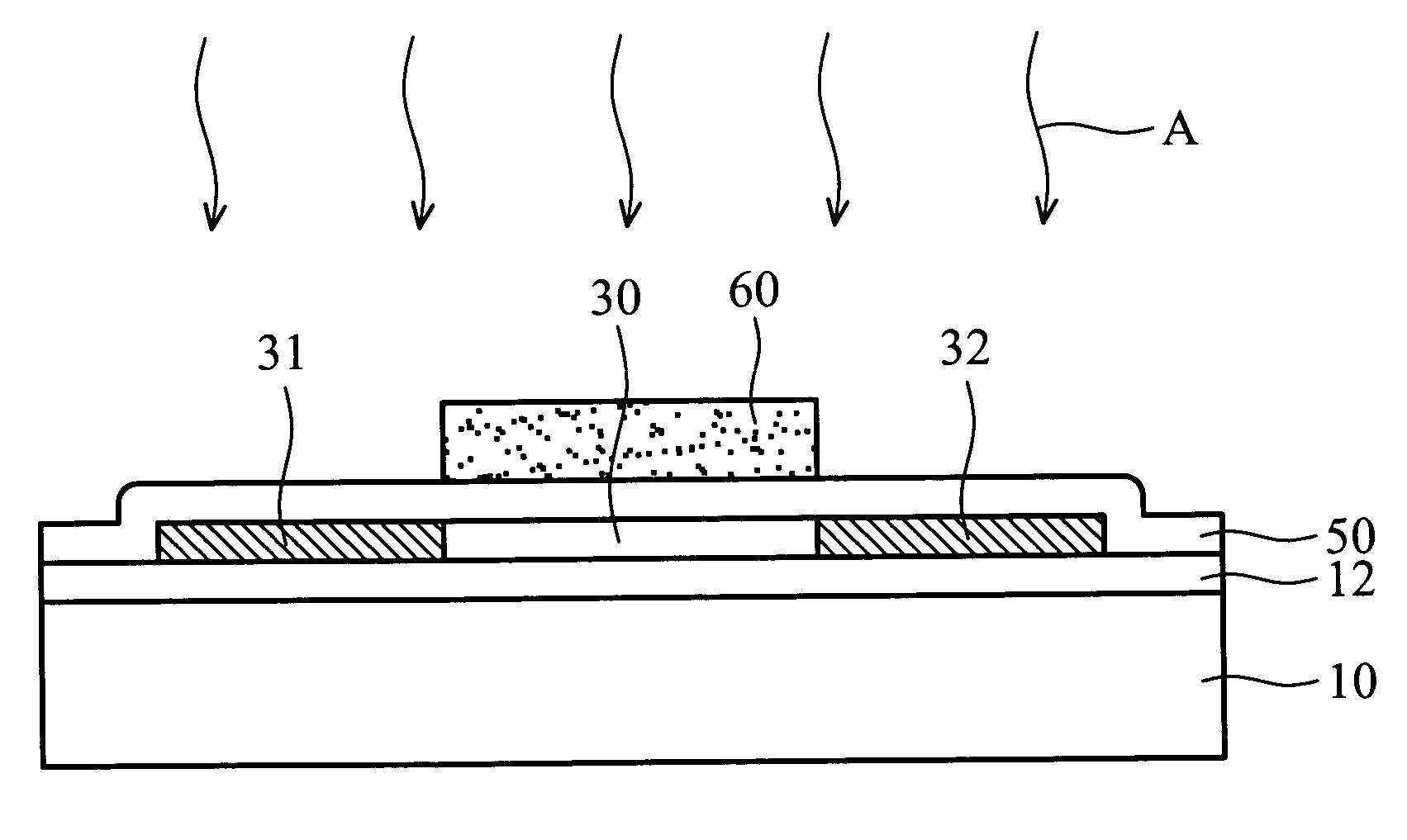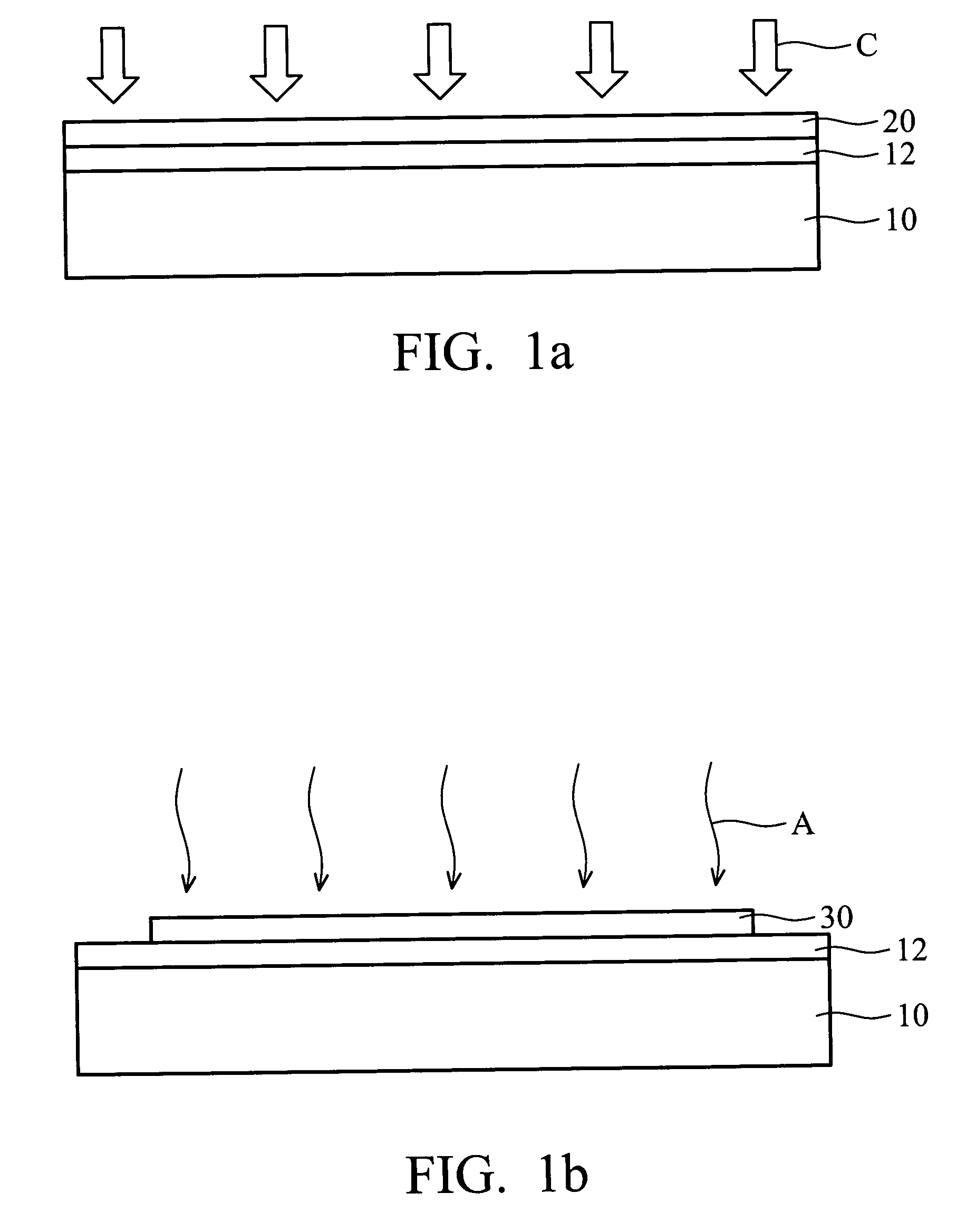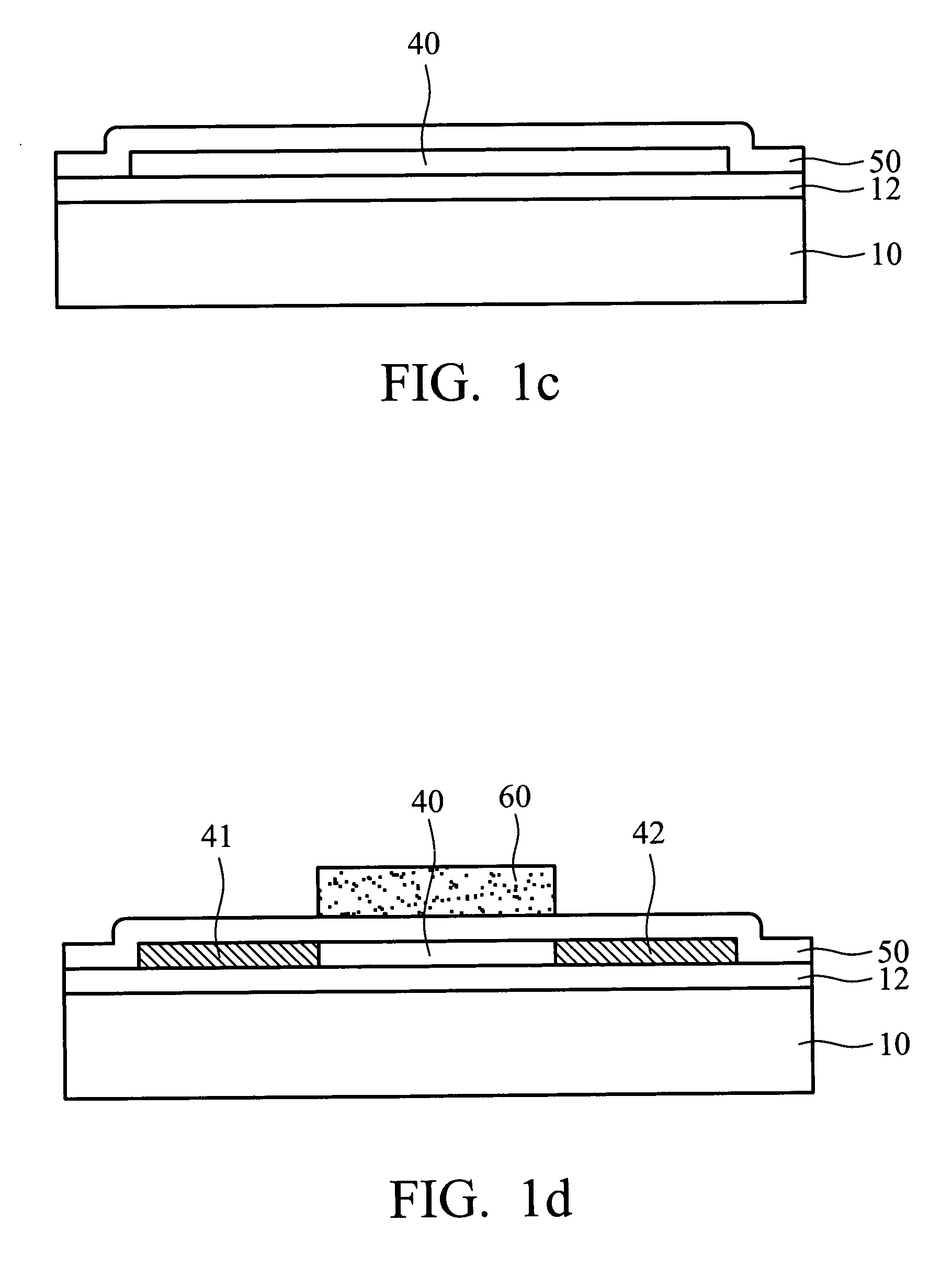Process for passivating polysilicon and process for fabricating polysilicon thin film transistor
a technology of polysilicon and thin film transistor, which is applied in the direction of transistors, semiconductor devices, electrical devices, etc., can solve the problems of reducing the hydrogenation efficiency, reducing the passivation efficiency, and generally not being able to undergo a process on the device, so as to shorten the passivation time and increase the passivation efficiency
- Summary
- Abstract
- Description
- Claims
- Application Information
AI Technical Summary
Benefits of technology
Problems solved by technology
Method used
Image
Examples
Embodiment Construction
[0016]The feature of the present invention resides in that the atom used is able to form a stronger bond with a silicon atom, such as F, N, or O, to fill in the polysilicon defect. Specifically, high pressure annealing is performed using a fluorine-containing gas, a chlorine-containing gas, an oxygen-containing gas, a nitrogen-containing gas, or mixtures thereof to passivate the polysilicon layer. Thus, a polysilicon thin film transistor with better electric properties and reliability can be obtained. The timing and / or sequence of passivating the polysilicon layer is not limited. Passivation can be performed directly after the polysilicon layer is formed without forming other films. Or, passivation can be performed after the polysilicon layer and the gate dielectric layer are formed. Or, passivation can be performed after the polysilicon layer, the gate dielectric layer, and the gate are formed. Or, passivation can be performed after the polysilicon layer, the gate dielectric layer,...
PUM
| Property | Measurement | Unit |
|---|---|---|
| pressure | aaaaa | aaaaa |
| pressure | aaaaa | aaaaa |
| temperature | aaaaa | aaaaa |
Abstract
Description
Claims
Application Information
 Login to View More
Login to View More - R&D
- Intellectual Property
- Life Sciences
- Materials
- Tech Scout
- Unparalleled Data Quality
- Higher Quality Content
- 60% Fewer Hallucinations
Browse by: Latest US Patents, China's latest patents, Technical Efficacy Thesaurus, Application Domain, Technology Topic, Popular Technical Reports.
© 2025 PatSnap. All rights reserved.Legal|Privacy policy|Modern Slavery Act Transparency Statement|Sitemap|About US| Contact US: help@patsnap.com



